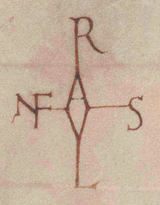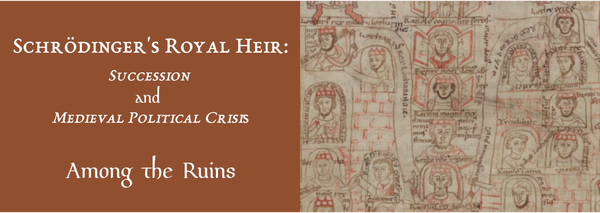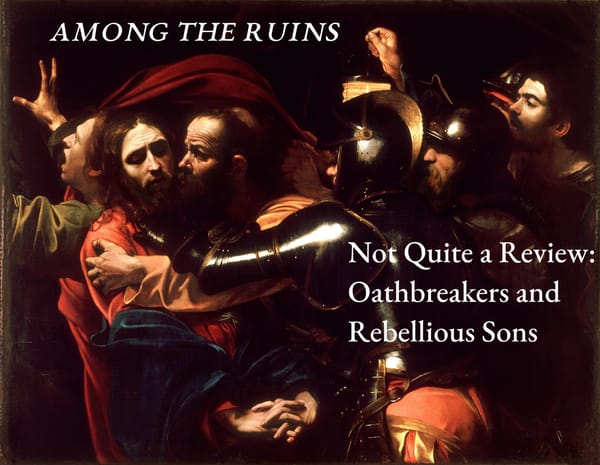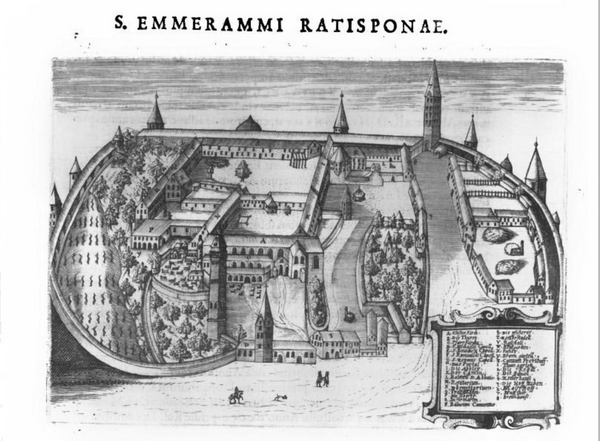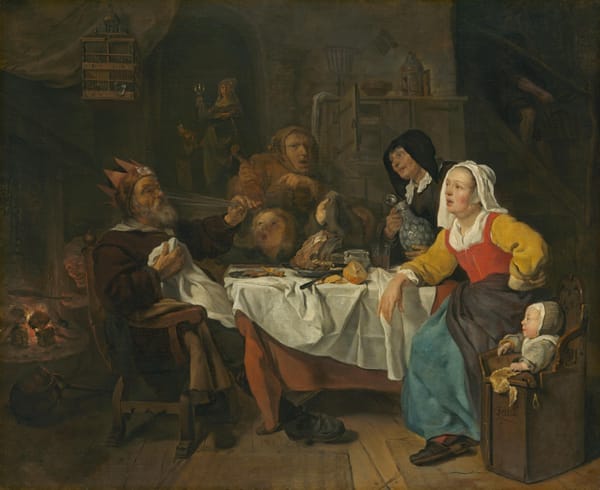Arnulf, Italian Politics, and Putting a Corpse on Trial
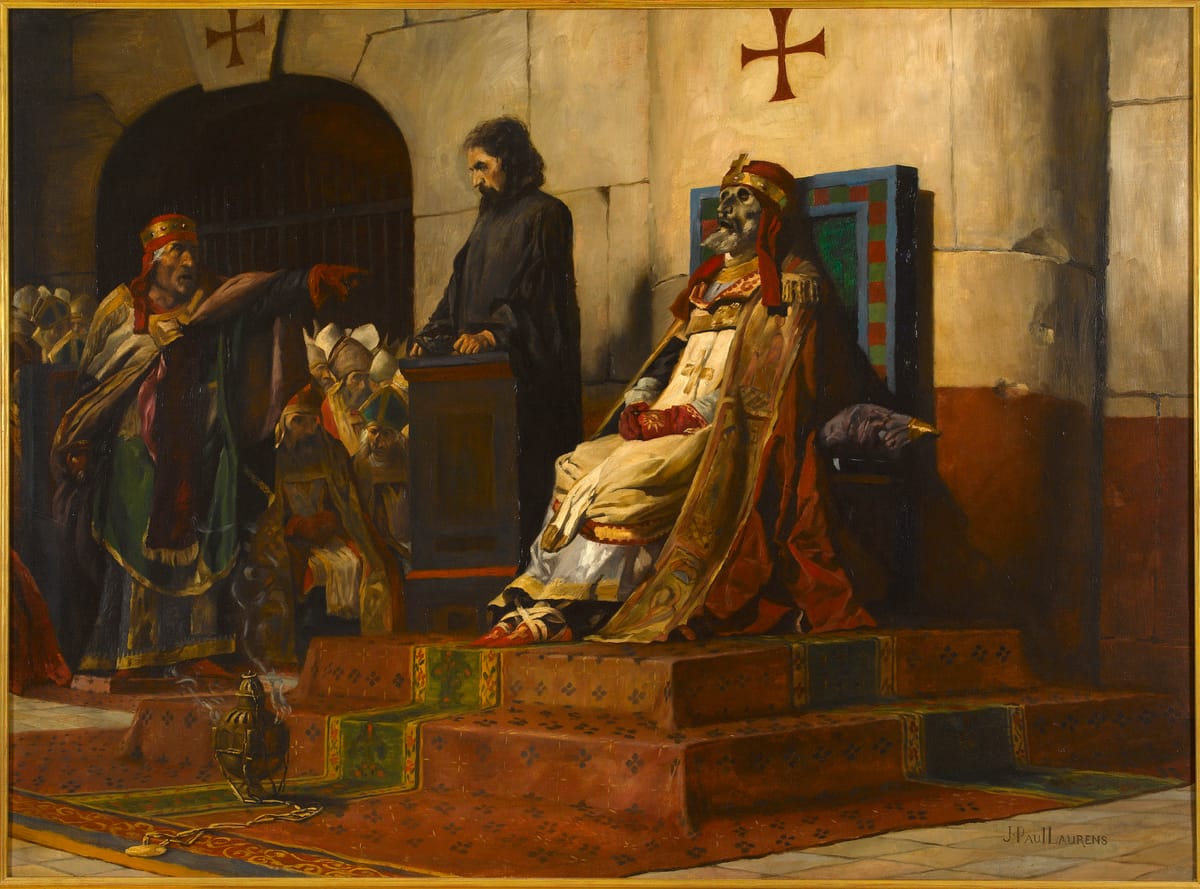
As usual for medievalists, we strive for topicality. Fortunately the recent papal conclave gives me an opportunity to discuss one of the wackiest events of the Early Middle Ages: the Cadaver Synod.
In brief the Cadaver Synod was a trial of the deceased Pope Formosus by Pope Stephen VI, the then-current pope. Formosus' body was physically exhumed and placed on trial, a trial which naturally found in Stephen's favor against Formosus.[1] Liudprand of Cremona, writing in the middle of the 10th century, gives us a vivid account:
Once these things were done, he ordered the corpse, stripped of its holy vestments and with three fingers cut off, to be tossed into the Tiber.[2]
I want to look at how Arnulf fits into this picture, and how the complication of Italian politics at the end of the ninth century doesn't provide us a clean narrative for the Cadaver Synod. Arnulf had just been in Rome, in early 896, where he was crowned emperor by Formosus. Arnulf had inserted himself into a difficult political situation: Italy had seen numerous kings and popes in the years after the last Carolingian ruler of Italy, Louis II, died in 875.[3] Louis II had designated Arnulf's father Carloman as his heir, but Carloman himself died soon after.[4] I believe that Arnulf felt he had a claim to Italy because of this, however, which drove some of his interests there. Formosus was no stranger to Carolingian politics either, he had been one of the bishops tasked with traveling through the empire in 869.[5] He had also been sent to the Bulgarians by Pope Nicholas II, suggesting an intriguing possibility that he stopped in Bavaria along the way and met Arnulf.[6] Yet Formosus seems to have been a bit of a controversial figure, because in the 876 we can read that he was condemned by the pope along with a few others.[7] By the time Formosus became pope in 891, Italian politics had become increasingly tense, with various rival claimants to the throne.
Our main East Frankish source, the Annals of Fulda, has a negative view on the whole affair. This type of source, an annal, was organized into yearly entries but that does not necessarily mean they were written at that time. Indeed the annalist here has placed the events of the synod alongside Formosus' death in 896. The "trial" took place in January 897, meaning that the annalist wrote at least this part of the entry after that time.[8] The annalist is compressing time, probably, to clarify that Formosus was unjustly treated by Stephen VI. They write:
At Rome pope Formosus died on Easter [April 4th]; in his place Boniface was consecrated, who, it was discovered, seized by the illness of gout, survived hardly 15 days. In that seat a pope named Stephen succeeded, a man bringing his reputation into disrepute, who in an unheard manner ejected his predecessor, namely Formosus, from the grave.[9]
The annalist indicating that Formosus died on Easter (the holiest day in the Christian calendar), and the use of infamandus as the verb to describe Stephen's reputation, are critical: Stephen's actions were shameful and diminished his reputation. William Monroe argues that the Cadaver Synod only took place as a way for Stephen VI to reconcile himself with Lambert, the young rival emperor of Italy.[10] This is certainly plausible. However I am not so sure it is quite so tidy a story. Lambert would seemingly be involved in the synod that overturned Formosus' expulsion, which suggests Lambert either had a change of heart or it was not a matter of Stephen playing (imperial) politics by disgracing one of his predecessors.[11] Indeed already by 898 a synod held in Rome could note that there was:
A synod in the time of pope Stephen VI...in which the venerable body of the venerable pope Formosus had been disturbed from the grave and dragged through the earth.[12]
Seemingly, then, the opinion of the Cadaver Synod turned negative pretty quickly. Even during Stephen's tenure as pope there was at least a brief period where he continued to recognize Arnulf as the emperor. Arnulf was crowned emperor in February 896 and left Italy in April, but as late as August 896 a papal charter from Stephen was dated to reign of "the most pious and perpetual lord Augustus Arnulf, crowned emperor by God."[13] Likewise a papal denier (coin) from Stephen's reign also has Arnulf's name on the reverse.[14] That means the shift in loyalty took place sometime between August 896 and 897, not when Arnulf left in April. Arnulf was in fact still in Italy when Formosus died.[15] At least nominally the pope continued to recognize Arnulf's authority. One issue with the reconciliation theory is that it foregrounds imperial politics as the driving force of the popes in this period, but Formosus' predecessor had also asked Arnulf to come to Italy, so it seems unlikely it was simply Formosus favoring Arnulf over Lambert. Indeed Formosus seems to mention his friendship with Lambert in a letter to archbishop Fulk of Rheims.[16] Besides the one charter and the coins, there is also little evidence that Stephen VI had a particularly cozy relationship with Arnulf.
That is, I am not totally convinced we can read the Cadaver Synod through the lens of imperial politics. In the process of writing I came across an article from 2015 written by Laurent Jégou. As Jégou rightly points out, the Cadaver Synod could not have been about invalidating Arnulf's coronation as emperor, because Formosus had also been the one who crowned Lambert as emperor.[17] Jégou's argument is that the synod was embedded in competitions between rival papal factions, and the synod arose out of a specific cultural, political, and religious context that drew on Christian and Byzantine precedents. That is, it was not simply cruelty by Stephen VI. It was precipitated by debates over the translation of bishops, of ordinations, and other questions. This interpretation fits much better than one foregrounding the role of imperial politics. Arnulf certainly hoped to be involved in Italian affairs, but his rule there was relatively short-lived on account of illness.
Yes, yes, I know, this is a pretty unsatisfying answer to "how does Arnulf fit in" but that is an important lesson. Sometimes historical research leads us some place we didn't expect, and sometimes that answer is "this isn't super relevant to my topic." But that doesn't mean it was "pointless." Instead, writing this means I learned something about the papal context of the late-ninth century that is useful for the bigger picture of what is going on while Arnulf was invading Italy. Yet it also matters because the Cadaver Synod is frequently cast as a sign of the barbarity of the Middle Ages, when even the supposedly religious members of the church did wild and crazy things. That may sound good for internet clout in a Youtube video, but even to Formosus' contemporaries the Cadaver Synod was seen as unjust. As is normal for the historian, understanding the past means acknowledging that reality is often complicated.
Thanks for reading! Hopefully you subscribe (either free or paid!) to keep supporting my work.
- A quick note: there is a new (from 2021) MGH volume on many texts relating to Formosus and the late-ninth/early-tenth century disputes about him, but I don't have access to it. See A. Grabowsky (ed.), Der Streit um Formosus. Traktate des Auxilius und weitere Schriften MGH Quellen zur Geisgeschichte des Mittelalters 32 (Wiesbaden, 2021). ↩︎
- This is taken from the translation by P. Squatriti, The Complete Works of Liudprand of Cremona (Washington, DC, 2007), p. 64. ↩︎
- On the importance of Louis II and his father Lothar see Jörg Jarnut, “Ludwig der Fromme, Lothar I. und das Regnum Italiae,” in Charlemagne’s Heir: New Perspectives on the Reign of Louis the Pious (814-840), eds. Roger Collins and Peter Godman (Clarendon, 1990); Chris Wickham, Early Medieval Italy: Central Power and Local Society, 400-1000 (Macmillan Press, 1981), pp. 47-63; Elina Screen, “Lothar I in Italy, 834-840: Charters and Authority,” in Problems and Possibilities of Early Medieval Charters, eds. Jonathan Jarrett and Alan S. McKinley (Brepols, 2013); Elina Screen, “Carolingian Fathers and Sons in Italy: Lothar I and Louis II’s Successful Partnership,” in After Charlemagne: Carolingian Italy and Its Rulers, eds. Clemens Gantner and Walter Pohl (Cambridge University Press, 2020). ↩︎
- Simon MacLean, “’After his death a great tribulation came to Italy….’: Dynastic Politics and Aristocratic Factions after the Death of Louis II, c. 870-c.890,” Millennium 4 (2007): 243-248. On the negotiations by Louis the German to secure the Italian throne see Goldberg, Struggle for Empire, pp. 304-309. D Ca 4: nobis regnum istud disposuerat. ↩︎
- AB, s.a. 869, p. 155. ↩︎
- See MGH Epp. 7, no. 9, p. 327. Probably in the 860s. ↩︎
- AB, s.a. 869, p. 204. ↩︎
- This is actually a very important point I've never caught about the dating of this entry, but that is a different post. ↩︎
- AF, s.a. 896, p. 129: At Roma Formosus papa defunctus est die sancto pasche; in cuius locum consecratur Bonifacius podagrico morbo correptus vix [XV dies] supervixisse reperitur. In cuius sedem successit apostolicus nomine Stephanus, vir fama infamandus, qui antecessorem suum, Formosum videlicet, inaudito more de sepulchro eiectum. ↩︎
- I have some reservations about the argument as it relates to Arnulf's invasion, but on Formosus see W. Monroe, “A New Look at the Cadaver Synod,” in F. Demoulin-Auzary, N. Laurent-Bonne, and F. Roumy (eds), Proceedings of the Fifteenth International Congress of Canon Law (Vatican, 2022), pp. 321-335. ↩︎
- MGH Capit. II, no. 230, p. 125. ↩︎
- This comes from G. Mansi (ed.), Die Sacrorum conciliorum nova et amplissima collectio, vol. 18 (1773), c. 1, col. 223: Synodum tempore piae recordationis sexti Stephani papae...in quam venerabile corpus Formosi venerandi papae de sepultura violata per terram tractum est. ↩︎
- H. Zimmerman (ed.), Papsturkunden, 896-1046 (Vienna, 1988), no. 2, p. 7: imperante domino piissimo perpetuo augusto Arnulfo, a Deo coronato imperatore, anno primo. ↩︎
- See P. Grierson, Medieval European Coinage, vol. 1 (Cambridge, 1986). nos. 1060 and 1061. ↩︎
- D A 142 was granted on April 25th, at Piacenza. ↩︎
- Mentioned in Flodoard, Historia Remensis ecclesiae, M. Stratmann (ed.), MGH SS 36 (Hanover, 1998), p. 376. ↩︎
- L. Jégou, “Compétition autour d’un cadavre. Le procès du pape Formose et ses enjeux (896-904),” Revue Historique 317, no. 3 (675) (2015): 515-516. ↩︎

